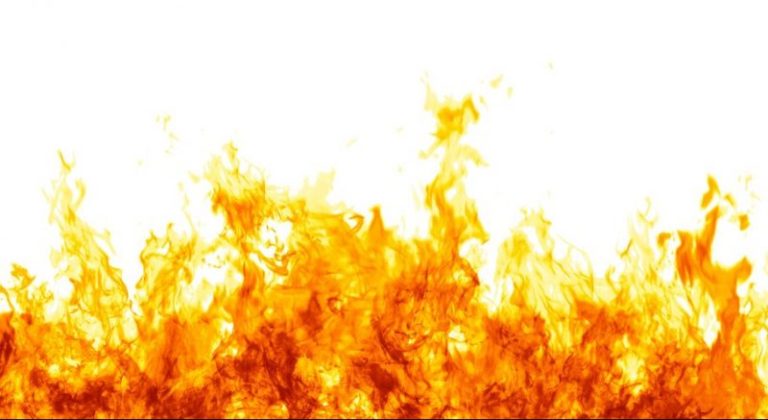About 486,000 people receive medical treatment for burn injuries in the United States every year. For the most seriously burned patients, this involves transfer to one of the nation’s 66 verified burn centers. But the vast majority of burn patients are treated in trauma centers and emergency departments without a specialized burn unit.
As burn specialists, we see the most serious end of the thermal injury spectrum every day. Our hospital, CHI Health St. Elizabeth in Lincoln, Neb., became one of the first verified burn units in the U.S. in 1973. Today, we treat more than 150 seriously burned patients every year.
Recently, we were asked what trauma centers, non-trauma EDs and prehospital providers can do to improve their care for burn patients. The short answer, in our view, is greater collaboration with your regional burn center. Verified burn centers offer expertise that can improve outcomes for burn patients — even if those patients never set foot in a specialized burn unit.
Strong collaboration requires information sharing. Based on best practices and available resources, following are four ways that trauma providers can leverage burn center expertise to improve care for burn victims in every setting.
1. Avoid “fluid creep”
In many regions, one of the biggest opportunities to improve burn care is to more carefully manage fluid resuscitation for burn victims. Too often fluids are run “wide open” in burn patients. This can lead to the phenomenon referred to as “fluid creep”.[1] The result is increased lung water, which leads to increased ventilatory time and all its associated consequences. Fluid creep has also been linked to abdominal compartment syndrome.
How can trauma providers avoid fluid creep? First, make sure you are following current guidelines from the American Burn Association (ABA) for calculating fluid needs. The best way to learn these guidelines is to take the ABA’s Advanced Burn Life Support (ABLS) course. This course educates trauma and emergency department staff on the most current practices for resuscitating and treating burn victims.
Second, make sure you understand how to estimate burn size. Research has shown that inexperienced practitioners often overestimate the size of a burn.[2] Since burn size is a key factor in fluid resuscitation formulas, burn overestimation will result in patients receiving too much fluid, even if the current resuscitation guidelines are used.
Fluid resuscitation guidelines are constantly evolving, so we also encourage trauma centers and non-trauma EDs to maintain ongoing communication with their regional burn center to stay up to date on the latest recommendations.
2. Do not delay intubation for burn patients
In our experience, providers are sometimes reluctant to intubate a burn patient. Verified trauma centers are usually very good about this aspect of care, but many ED staff in smaller communities do not feel comfortable with intubation. As a result, they will often wait for the transport team to intubate the burn victim.
Clearly, however, delaying intubation can have disastrous effects. At St. Elizabeth, we would rather take an endotracheal tube out of a burn patient who didn’t need it than to have the patient arrest two blocks from our hospital.
Our recommendation: If there is any doubt, intubate the patient. The airway is only going to get worse as the resuscitation continues and the tissues swell, so early intubation is a critical component of care.
Again, for all of the clinical management issues surrounding burn care, the best overall solution is to make sure trauma providers take the ABLS Course.
3. Use burn center referrals to guide early care
The ABA has established criteria for referral to a verified burn center. These criteria include:
- Partial thickness burns greater than 10% of total body surface area
- Burns that involve the face, hands, feet, genitalia, perineum or major joints
- Third-degree burns in any age group
However, there is some confusion about burn center referral. It is important to understand that referral to a burn center does not necessarily mean transfer to a burn center.
There are times when a patient meets the ABA criteria for referral, but there is nothing that the burn center would do differently, at least initially. In these cases, referral entails coordination with burn center staff. The burn specialist can provide advice on different aspects of burn treatment, plus guidance on whether to transfer and when transfer is recommended.
For example, a child touches the hot glass of a fireplace and develops a blister on the palm of their hand. Most of these burns will heal well without the need for transfer. However, these cases should be referred for burn specialist consultation. At St. Elizabeth, we often perform these referrals using telehealth tools that allow us to view the injury. Where telehealth is not available, a phone consult might often suffice.
4. Understand the resources available at your regional burn center
Here’s a common scenario: A patient presents at a trauma center with mechanical injury and concomitant thermal injury. Surgeons on staff are able to graft the burns, so the decision is made that the injury is not “bad enough” for referral to a verified burn center.
In some cases, this decision is appropriate. However, we would encourage trauma center leaders to consider the full range of care needs of the burned patient — and the full range of resources available at verified burn centers.
First, treating burn patients is not just about grafting. Burns are best treated by a team approach that can only be delivered at a verified burn center. In addition, burn centers offer treatments that are not available in most trauma centers, and certainly not in smaller critical access hospitals. These include xenografts and allografts that can accelerate the healing process, decrease pain, potentially eliminate twice-a-day dressing changes, and prepare infected burns for final grafting.

Finally, burn centers take care of more than just burns. Studies have shown that toxic epidermal necrolysis, a potentially life-threatening skin disorder, is best treated at a burn center.[3] Burn center specialists have also become the experts in treatment of frostbite using intra-arterial thrombolyis. For frostbite patients transferred to a burn center within 24 hours of their injury, we can save many of the limbs that in the past would have been lost to amputation.[4]
Seamless care
Clearly, a patient with both mechanical trauma and burn injury should never bypass a verified trauma center to get to a burn center. However, early coordination and consultation with burn center specialists can enable seamless care across the entire continuum and better overall outcomes.
David W. Voigt, MD is co-medical director, Christi Chaves, MA, RN, FACHE is nursing director, and Esther A. Rathjen, MSN, RN, APRN-CCNS is clinical nurse specialist at the Burn Center at CHI Health St. Elizabeth in Lincoln, Nebraska.
References
1. Saffle JI. The phenomenon of “fluid creep” in acute burn resuscitation. J Burn Care Res. 2007 May-June; 28(3): 382-95.
2. Hammond JS, Ward CG. Transfers from emergency room to burn center: errors in burn size estimate. J Trauma. 1987 October; 27(10): 1161-5.
3. Palmieri TL, Greenhalgh DG, Saffle JR, et al. A multicenter review of toxic epidermal necrolysis treated in U.S. burn centers at the end of the twentieth century. J Burn Care Rehabil. 2002 March-April; 23(2): 87-96.
4. Gonzaga T, Jenabzadeh K, Anderson CP, et al. Use of intra-arterial thrombolytic therapy for acute treatment of frostbite in 62 patients with review of thrombolytic therapy in frostbite. J Burn Care Res. 2016 July-August; 37(4): e323-34.

